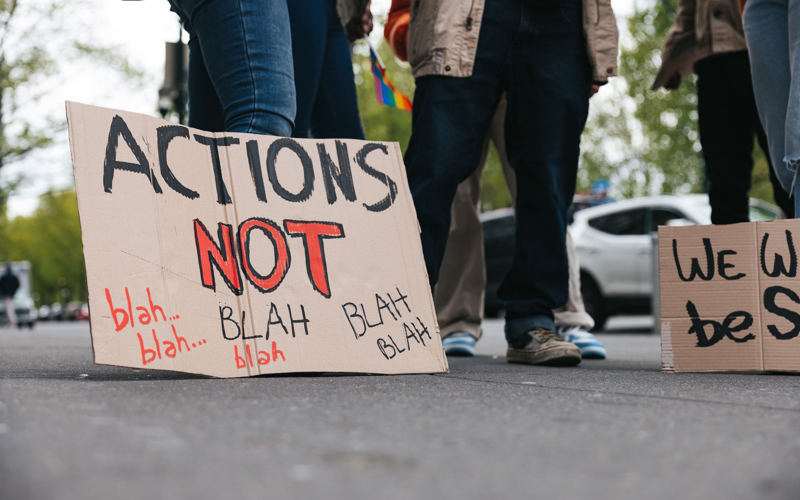The right to a healthy environment - what does it mean and why does it matter?
Tahlia McDonald
As a 22-year-old, it can be hard to envision a positive future for the planet over my lifespan. I have had many conversations with my peers about how disappointed we are with government inaction on climate change. Even when mitigation and adaptation measures are taken, it often seems like too little, too late. I feel that there is a sense of helplessness among the public, and particularly young people. We require significant measures from government and corporate powers, but how can we hold them to account?

This is why I feel so hopeful about the Australian Human Rights Commission’s proposal for a federal Human Rights Act. The proposal includes 28 rights, including the right to a healthy environment. If legislated, this would create a positive obligation for the Australian government to consider if any of its decisions could potentially violate the right to a healthy environment.
Compliance with this duty would be judicially reviewable, and I am hopeful that it could push the government to take stronger direct action on climate change, as well as to more deeply consider the potential ramifications of decisions such as approving new fossil fuel projects.
The proposed Act would also create legal avenues for individuals to pursue if they feel that their rights have been infringed upon by a public authority. Recent cases in the US and Australia show why legal avenues for enforcement of the right to a healthy environment matters.
In Montana, USA, a group of young plaintiffs invoked their right to a healthy environment in a trial against their state government. The judge ruled in favour of their argument that pro-fossil fuel policies violated the state constitution’s provisions guaranteeing a “clean and healthful environment”.
Hearing of this result brought to mind the landmark case of Minister for the Environment v Sharma, in which a group of teenagers (and an elderly nun) sought to prevent the expansion of a coal mine by arguing that the Minister for the Environment had a duty of care to Australian children. Although this case ultimately lost on appeal, I can imagine a positive future where a similar case invokes the right to a healthy environment and succeeds.
As a young person, I know I am not alone in my concerns about our shared future. According to UN statistics, there are currently 1.2 billion young people aged 15 to 24 years old. We account for 16 per cent of the global population. By 2030 – the target date for the Sustainable Development Goals (SDGs) that make up the 2030 Agenda – the number of youth is projected to have grown by 7 per cent, to nearly 1.3 billion. Central to the SDGs is the principle of “leave no one behind”.
That gives us 1.3 billion reasons to get on board with stronger efforts to protect all of our rights, including our right to a healthy environment.
You can read more about the proposed right to a healthy environment here.
References
Australian Human Rights Commission. (2022). Free & Equal: Position paper: A Human Rights Act for Australia.
Federal Court of Australia. (2022). Minister for the Environment v Sharma.
Noor, D. (2023, August 15). ‘Gamechanger’: judge rules in favor of young activists in US climate trial. The Guardian.
UN Committee on the Rights of the Child. (2023, August 22). General comment No. 26 (2023) on children’s rights and the environment with a special focus on climate change.
United Nations. (n.d.). Youth.